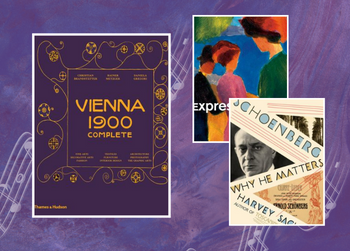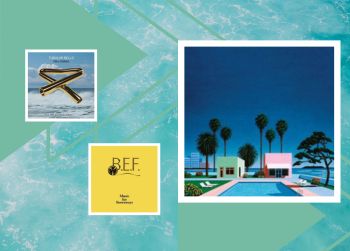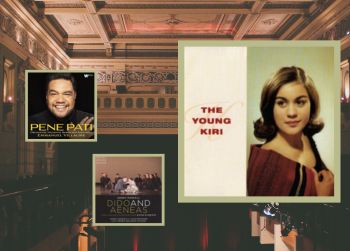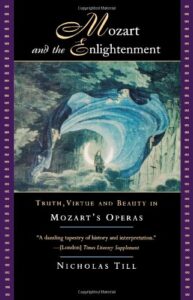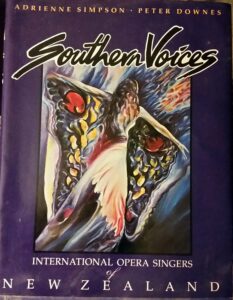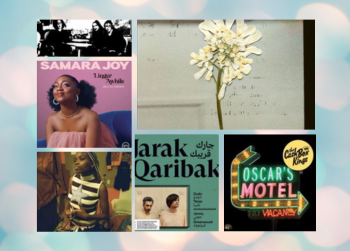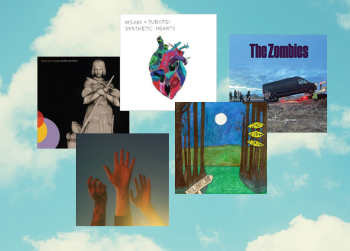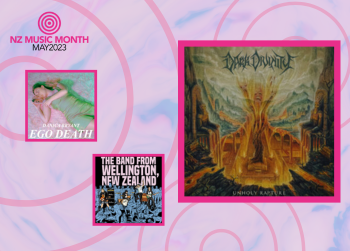Here is part 3 of our New Zealand Music Month Music picks for May. You can catch up with Part 1 here, and Part 2 here. This is a mix of some recent, and some older, Wellington releases and reissues on CD & Vinyl.

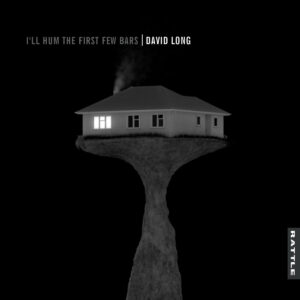 I’ll hum the first few bars / Long, David
I’ll hum the first few bars / Long, David
Mark: The new David Long is a quasi-classical/experimental album of commissioned pieces. The title track for chamber orchestra, electric guitar and mechatronics was commissioned by Orchestra Wellington and recorded with Stroma. The rest of the tracks were composed for Douglas Wright’s dance work, ‘Rapt’, and are performed by David Long and Jeff Henderson. The orchestral track explores the collision of structured string parts with punk rhythm’s and instrumentation, while the unusual instrumentation of the ‘Rapt’ tracks feature feedback, banjos, toy percussion, accordion, making the music a character in the larger drama of the choreography.
Neil: Just last year David Long released Ash and Bone, a gorgeously suite of pieces that defy easy generic categorisation, which David described as a work that makes “a constellation of musical styles but never quite rests in any one of them”. The same holds true for ‘I’ll Hum the First Few Bars’, a recording as texturally rich and sonically expressive as we have come to expect from this bold and inventive composer.
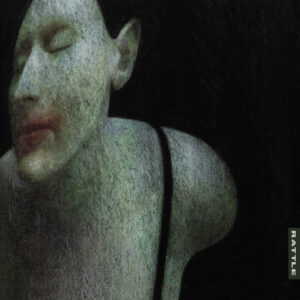 Wāhine / Griffin, Hannah
Wāhine / Griffin, Hannah
Mark: Wāhine’ is an album of poetry by New Zealand women set to music. Our catalogue files it under vocalist Hannah Griffin, but like a lot of Rattle Records projects it’s really a collaborative effort by Griffin, pianist Norman Meehan, and Thomas Voyce (ex-Rhombus) on everything else. Blair Latham (bass clarinet) and Nick van Dijk (flugelhorn) provide some additional coloring on some tracks. The poems are from Hinemoana Baker, Cilla McQueen, and Janet Frame, all re-framed into an amalgam of Electronic textures, processed elements & vocals, & Jazz stylings and phrasing. The arrangements are quite varied, moving from moody and minimal to larger soundscapes, and often quite funky in places.
Neil: ‘Wāhine’ by Hannah Griffin is an album of exceptional New Zealand Aotearoa poems by the likes of Hinemoana Baker, Cilla McQueen, and Janet Frame set to music and released on the outstanding Rattle Label. It is notoriously difficult to set poems convincingly to music, perhaps because they contain their own rhythmic structure, but this collection stunningly avoids any pitfalls, largely because the musicians treat the poems as lyrics. This might seem like a small point but it makes a world of difference, allowing the songs to flow. The end result is very beautiful, atmospheric, mellow, melodic and often melancholic work, with minimalist slightly Jazz undercurrents .
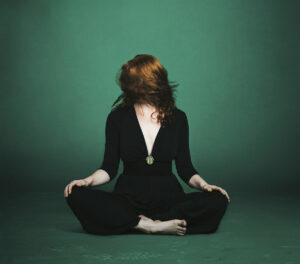 Apart / Bergman, Teresa
Apart / Bergman, Teresa
Mark: Teresa Bergman is a musician originally from Lower Hutt, who finished fifth on New Zealand Idol in 2005. She moved to Berlin a few years later and found success there as a street busker before being signed to a local label. She has just released her third solo album 33 Single & Broke, which has gotten great reviews. This is her 2nd album, ‘Apart’, which was released in 2019 on the German label Jazzhaus Records. She has a distinctive, rich, jazzy voice that merges Jazz stylings and rhythms, with sophisticated contemporary singer-songwriting, to dig into the knotty subtexts and contradictions of modern relationships.
Neil: Teresa Bergman’s rich, powerful and versatile neo soul jazz voice is at the centre of this album about separation. It is a very impressive, and at points intense, pop-soul outing with strong jazz elements and some folk and experimental moments. And definitely displays a deep emotional honesty in its lyrics.
 Swings & roundabouts / Lockett, Mark
Swings & roundabouts / Lockett, Mark
Mark: Local drummer Mark Lockett took this set of compositions for his 7th album, composed during lockdown, to New York once the travel restrictions lifted. Employing NY heavyweights David Binney, Duane Eubanks, and expat Kiwi Matt Penman, he eschews a pianist to focus on the chord-less playing that he prefers. Harks back to the late 50s/Early 60s Atlantic albums of Ornette Coleman’s classic quartet with Don Cherry, Charlie Haden, and Ed Blackwell. But this is structured rather than free-form playing, with this engaging set of twisty rhythmically complex tunes.
Neil: ‘Swings and Roundabouts’ is a straight down the line jazz album by New Zealand drummer Mark Lockett . It’s his seventh release and can be described as an adventurous and fresh free-form jazz album, which avoids the more discordant places some free form jazz albums explore. It displays a very high level of musicianship and creativity and should have a great appeal for fans of this particular musical genre.
 Heroine : the Wild Poppies complete collection (1986-1989) / Wild Poppies
Heroine : the Wild Poppies complete collection (1986-1989) / Wild Poppies
Mark: Formed in 1986, local band The Wild Poppies quickly released a debut album, then relocated to the UK and made a name for themselves in the fledgling Oxford music scene, touring with Ride and Swervedriver, before the advent of rave culture came to dominate the UK scene, and eclipsed their sound. This release compiles, for the first time, their long out-of-print “Heroine” LP on Poppie Records, the “Stare at the Sun” 7”, the “Out of Time” EP as well as some later day demos. An interesting slice of local jangle pop history, from a band that made a lot of local headlines at the time. They had a sound that still resonates locally, and perhaps would have lasted longer in NZ, rather than the ever evolving nature of UK music at that fertile late 80s/early 90s period.
Neil: This rerelease covers pretty much the entire catalogue of mid 80’s jangle pop maestros The Wild Poppies . Sadly, fate wasn’t to be on their side, as their jangly pop sound much beloved in the early eighties was soon to be commercially eclipsed and swept aside by dance culture. The band split soon after the release of their swan song EP. Their trademark ‘warm wall of sound’ is very much on display and the album is a must listen for fans of Neo-Psychedelic pop, 80’s indie pop, and especially jangle-pop with its distinctive guitar sound.
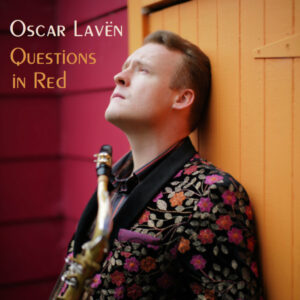 Questions in red / Lavën, Oscar
Questions in red / Lavën, Oscar
Mark: More local Jazz from go-to local tenor sax man Oscar Lavën, who is part of numerous local ensembles and guested on numerous projects from The Roger Fox Big Band, to the Wellington Shake-Em-On-Downers. The band includes local players Mike Taylor on trumpet, John Rae on drums, Patrick Bleakley on bass & Ayrton Foote on piano. All the compositions are by Lavën, who embraces elements of the old and the contemporary in his playing. These guys have played so many Jazz Festivals and gigs together that you can feel the simpatico musical sense between, resulting in a set of expertly performed Jazz. Improvisational in places, but mostly just a swinging set that lets his sax playing shine in various contexts that are always engaging, with their different musical shades and colours.
Neil: Oscar Lavën’s ‘Questions in red’ is one of those oh so cool late night café Jazz offerings. it oozes mellow, chilled and romantic tones. Superbly executed cool Jazz boasting topflight musicianship with touches of Monk and Mingus, which isn’t surprising as he covers some of their work. Oscar also displays his own joyful exploration of his own jazz musicianship throughout.
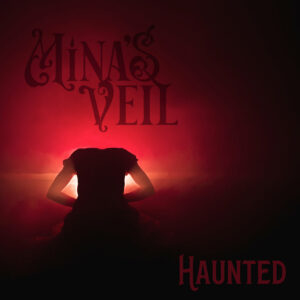 Haunted / Mina’s Veil
Haunted / Mina’s Veil
Mark: Mina’s veil are a neoclassical dark-wave band, so there are a lot of soaring soprano lines backed up with rich orchestral accompaniment. They’re inspired by Victorian Gothic novels, fairy tales, myths & legends and have just released their 2nd album ‘Haunted’. Ethereal meets classical, gothic bells and sweeping orchestrations that have a rich, cinematic feel of dramatic crescendos and interludes.
Neil: ‘Haunted’ by Mina’s Veil is a rich gothic melodramatic work, with strong romantic classical overtones, with lyrics sung in soaring soprano heavily inspired by Victorian novels and fairy tales. It is very cinematic in feel and structure. Music that evokes mist-soaked moors, decaying castles and doomed lovers in flock coats.
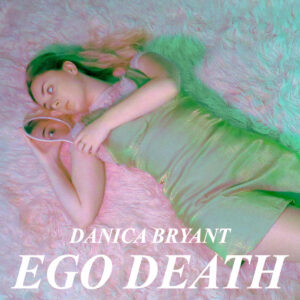 Ego death / Bryant, Danica
Ego death / Bryant, Danica
Mark: Danica Bryant, a singer-songwriter who grew up in Hawke’s Bay, and is now based in Wgtn. We are big fans of hers and actually filmed her gig at Gardens Magic in 2021, which you can find on our YouTube channel. ‘Ego Death’ is her sophomore EP, and moves away from the acoustic folky feel of her debut, for a brighter pop-banger focus. Every track here is just super catchy and melodic, while the biting lyrics reveal a caustic juxtaposition of the bitter & the sweet.
Neil: Danica Bryant is one most exciting and rising stars in the Aotearoa / New Zealand pop World. ‘Ego Death’, her sophomore EP, amply displays why, with thoughtful and carefully crafted pop songs which encompasses catchy sugary pop hooks coupled with her memorable lyrics. This is just her second release but you can hear an artist growing in confidence and musical artistry not to mention skill. Danica is already a major artist whose work seems destined to reach a huge mainstream international audience sooner or later.
 Melanchole / Johann, Daniel [Also on VINYL]
Melanchole / Johann, Daniel [Also on VINYL]
Mark: ‘Melanchole’ is a set of lo-fi pop songs recorded by the enigmatic Daniel Johann in 2012 when he was 15 years old, and originally self-released in 2013 digitally on Bandcamp under the moniker Salvia Palth. The album went on to become a viral internet sensation, garnering over 100 million streams on Spotify and a large TikTok following, which is only growing. The track “I was all over her” alone now has nearly a quarter of a billion streams on Spotify. In 2016, Melanchole was remastered and released on vinyl with a new track listing. The first pressing sold out within the first 24 hours it was released and this is, I believe, now the 3rd pressing, and it’s 10th Anniversary. Sludgy reverb and crackly production define this atmospheric bedroom pop that has become a beloved cult piece, with its (many) musical imperfections somehow coming to define the messy angst of teenage awkwardness & alienation.
Neil: Daniel Johann aka Salvia Palth aka Adore is an artist well worth checking out, as he has adopted a variety of different musical styles and guises over the years. This his 2013 album was released under the moniker of Salvia Palth and it’s a lo fi melancholic, dream pop slow burner, with heavy duty shoegaze and emo influences. It reminded me a little of the iconic Loveless by My Bloody Valentine. The lyrics are about longing, alienation with a dense nocturnal feel to them. The music has that dreamy, bittersweet hypnotic quality to it. If this is your scene, it’s well worth a listen.
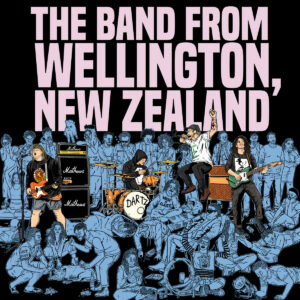 The band from Wellington, New Zealand / Dartz [Also on VINYL]
The band from Wellington, New Zealand / Dartz [Also on VINYL]
Mark: DARTZ bring their party-pop-punk aesthetic to life in Wellington in a series of short punchy songs that seem to focus on beers, shitty flats, house parties, bad dealers, Toyota corollas, and getting high. However, if the titles of these songs imply a somewhat shallow sense of fun, that is definitely not the case. Beneath the tongue-in-cheek references, the adopted personas, video antics, and seemingly mundane takes of life in NZ, are tracks with reflective and insightful lines that elevate the material, using the genre to touch on social issues around housing, anxiety, politicians, religious figures, colonisation, mental health and more. A funny and clever album, whose success lies in just the right balance of goofy fun and serious intent.
Neil: Wellington party punk band the Dartz started life as a dare. When they went for a support slot for one of their favourite bands the mullet heavy The Chats. Problem was, at that point in time, they were a totally fictitious outfit – not a band at all, just the idea of a band. But after a frenetic couple of weeks actually putting together and creating a band, they did play that support slot and to their surprise had a rapturous crowd, and the rest as they say is history. Their songs are fast, raucous, often laced with sly humour and mainly about drinking, drugging and having wild party times and fun. “Twenty-four beers and only two free hands” indeed.
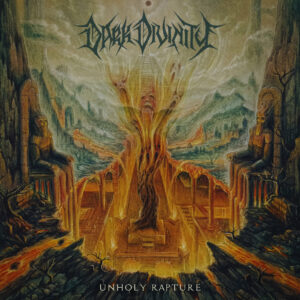 Unholy rapture / Dark Divinity [Also on VINYL]
Unholy rapture / Dark Divinity [Also on VINYL]
Mark: After 4 singles, a debut EP, and numerous personnel changes, including the departure of vocalist Jolene Tempest, Dark Divinity serve up their debut album. Chunky riffs and precise playing highlight the melodic strain of Death Metal on display here. The return to male vocals with Jesse Wheeler and new guitarist Jiji Aligno add different dimensions to the sound. To non-Metaler’s it may sound a bit samey, but within each track they offer up plenty of technical nuances, shifts in speed and textures to satisfy any Metal fan.
Neil: ‘Unholy rapture’ is Dark Divinity’s debut release, but from the sophistication and confidence of the tracks you would never know. There are elements of black Metal and Death metal, but Dark Divinity has higher aspirations than just being a genre follower. Instead they are out to forge and create their own unique sound. If you like your music dark, fast, furious and brutal, but with an inner melodic core then this should suit you.
 Te oranga / Little Bushman [Also on CD]
Te oranga / Little Bushman [Also on CD]
Mark: Little Bushman were a 2000s group with members who had prominent roles in other local bands. Comprised of Warren Maxwell (Trinity Roots), Rick Cranson, and brothers Joe & Tom Callwood, ‘Te oranga’ was the bands 3rd album, now pressed on Vinyl for the first time. Their mix of proggy, psych 60s & 70s influences, with a moody deep roots-rock folk sound, gave their albums a dynamic sprawling feel, full of space for the music to roam. ‘Te oranga’ is a more more mellow, than the heavier Pendulum that preceded it, with a more soulful keys vibe, Te Reo elements and social commentary. Though this often runs up against the ponderous ‘cosmic’ searching that typifies any ‘prog’ influenced music, the juxtaposition of styles works more often than not, giving their a music a unique energy.
Neil: ‘Te oranga’ is the third album by the legendary local band Little Bushman originally released in 2011. This very welcome Vinyl reissue demonstrates their stunning haunting, blues and 60s psychedelic folk rock trademark sound perfectly. The lyrics, as well as having a space rock vibe, also deal with big issues such as the negative influence of technology in the 21st century. The musicianship on show is exceptional and the vocal delivery of Warren Maxwell points the way towards the other hugely acclaimed band he is part of, Trinity Roots.
 The Pacifier album / Shihad [Also on CD]
The Pacifier album / Shihad [Also on CD]
Mark: 2022 Vinyl reissue of Shihad’s fifth studio album. The 2002 album was a bid for the American market with the band’s name changed to ‘Pacifier’ to avoid associations with the word ‘Jihad’. Derided by fans, and not much liked by the band itself, the music from this period is certainly more commercial, much cleaner sounding, and obviously an attempt at a more commercial sound. Indeed Stone Temple Pilots’ Scott Weiland and DJ Lethal (Limp Bizkit) both feature on the track ‘Coming Down’. Listening to it again today it has actually aged better than you might think, and while it is somewhat generic in places, it has quite a bit in common with that mid-period ‘Foo Fighters’ sound, which itself has achieved an almost classicist position with American rock music. Over polished but worthy of reevaluation.
Neil: Shihad’s trademark interpretation nu-metal, post grunge hard rock (not to mention some excellent albums) had led the band to the top of the rock scene in Aotearoa. All they needed to do now was conquer the American market, but like many bands before them it didn’t quite work out as they expected. Indeed, the band nearly split for good whilst recording and touring this album. It’s a testament to their resilience as a band that they released an album at all. In short, the pressure to release a huge, bestselling album led to conflict and division all round. The resulting album divides opinion both within their fan base and the band itself with one reviewer scathingly calling it a “12 track green card application”. It’s not that bad; just too smoothed out and polished for it to be one of their best releases or play to the bands many strengths.
 They seek my head / End Boss [VINYL only]
They seek my head / End Boss [VINYL only]
Mark: The debut album, following 2019 single Feral, and 2020 two song EP Heart of the Sky. Stoner/doom/sludge metal 4 piece that features Nathan Hickey from Beastwars, and guitarists Greg Broadmore and Christian Pearce from Ghidoragh. The key weapon, though, is vocalist E.J. Thorpe, who really shows how much difference in textures and stylings a female vocalist can have on heavy oriented music. Big distorted riffs combine with a darkly symphonic sound, occult vibes and hard-rock/bluesy vocals, filtering in unexpected influences from shoegaze to alt-rock, to create a unique blues-metal kind of sound.
Neil: The debut release from heavy rock, sludge metal band End Boss ‘They Seek my Head’ is a powerful, dark stoner release. The tunes are built round a solid bedrock of relentless pounding drums, heavy duty riffs and truly impressive vocals delivered by EJ Thorpe, which are very carefully incorporated into the mix so as not to get lost. They also sound like the kind of band that would peel the paint of the walls live.
Gustav Mahler : songs and symphonies of life and death : interpretations and annotations / Mitchell, Donald


